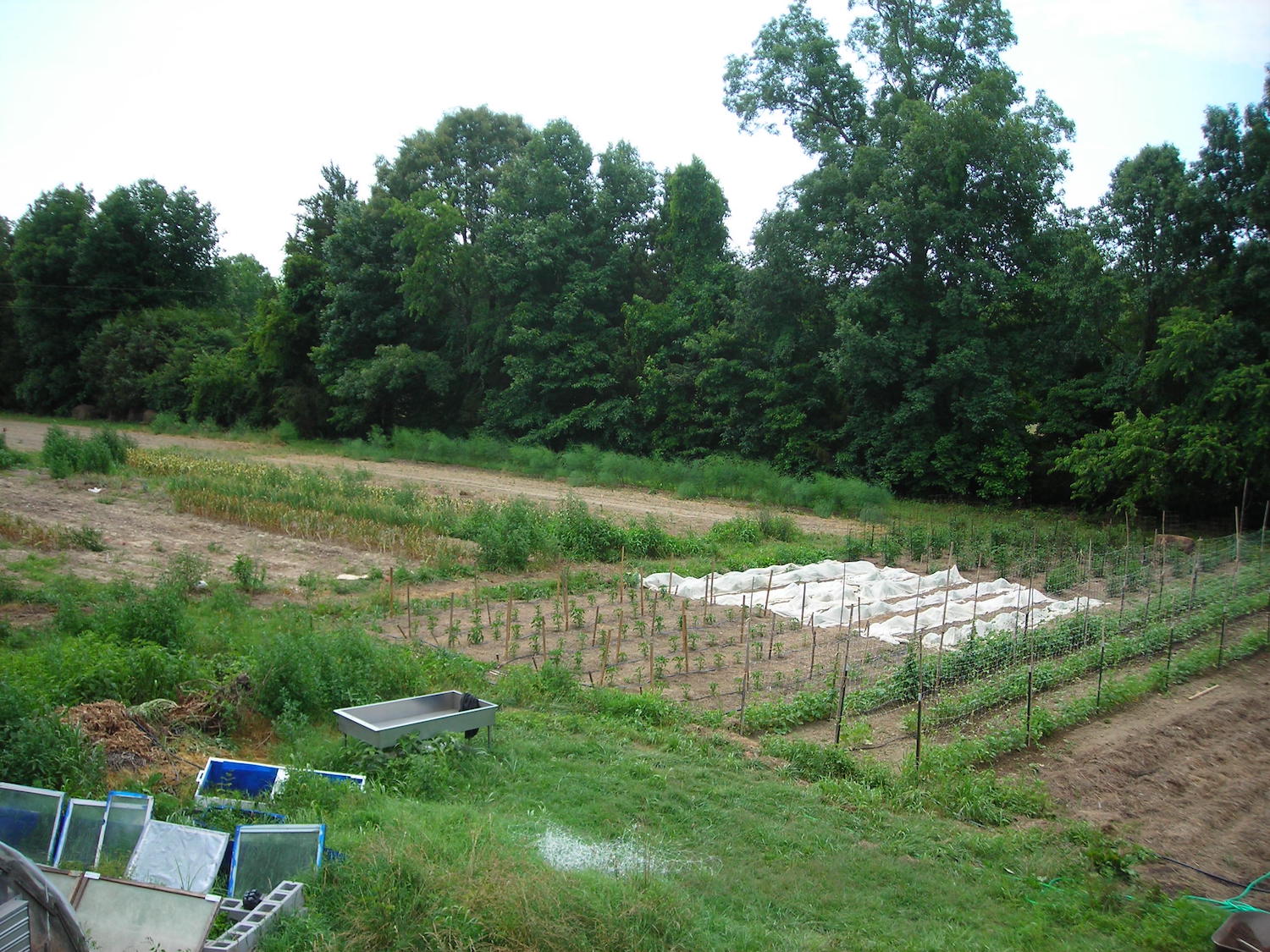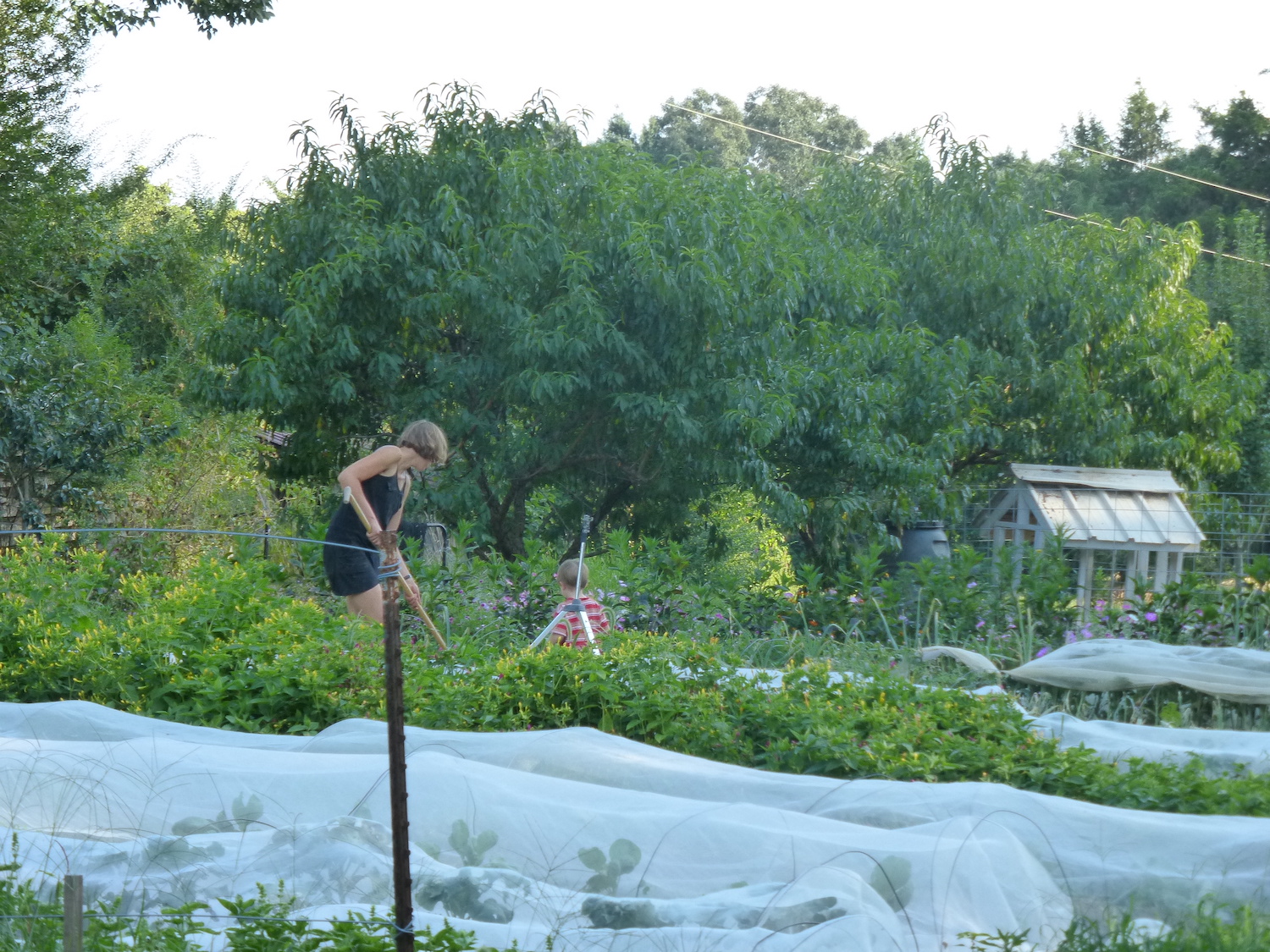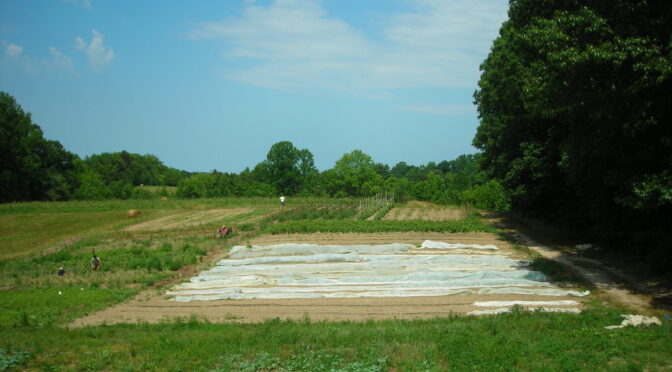If you’ve ever visited an organic vegetable farm, you’ve probably seen large sections of field blanketed in white cloth. Sometimes, it’s laid directly over the crops, and sometimes it’s held above them over small hoops, giving it the appearance of a long caterpillar sleeping in the garden. This gauze-like white fabric is called row cover. It’s typically made from woven or spun-bonded polyester or polypropylene and is designed to be permeable to air, light, and water. Farmers and gardeners can use this fabric to help protect crops from pests, cold temperatures, too much sun, and windburn.
Protect Your Crops From Wind
Wide open fields may be many gardeners’ dream, but they can be windy places! High winds can be tough on plants, especially tender transplants. Constant winds pull moisture from the soil and plants’ leaves. They can also tear leaves and damage limbs, leaving plants more susceptible to pests and disease. Using row cover in windy areas, especially as plants are getting established, can mitigate these issues.
Protect Your Crops From Sun
Shade cloth is similar to row cover but is generally used to protect plants from intense sun and heat. It’s often used to extend the growing season of greens, delaying bolting by keeping temperatures a bit cooler. It can also be used in extreme heat over crops like peppers and tomatoes, which may abort flowers or develop sun-scald.
If you can’t purchase shade cloth, you can hang old torn pieces of row cover or other thin fabrics over crops to provide some shade.
Protect Your Crops From Frost
As we plan our fall gardens, we think about the dwindling light and drop in temperatures that fall will eventually bring. Row cover increases the temperature and humidity beneath it and can be used to increase growth and protect crops in the spring and fall.
How much protection your row cover provides will depend on the weight. Some thinner row covers only provide about 2°F of frost protection, while others offer 6° to 10°F of protection.

Protect Your Crops From Pests
Keeping crops pest free can be challenging without resorting to some form of pesticides. Even those OMRI (Organic Materials Institute) certified pesticides can have unwanted adverse effects, harming beneficial insects in the area along with pests. Row cover allows you to block out pests, no sprays needed.
Row cover works with many crop and pest scenarios, including keeping brassicas like cabbage and broccoli free from cabbage loopers, preventing flea beetles from destroying young eggplants, stopping bean beetles from defoliating your bush beans, and preventing pesky vine borers, squash bugs, and cucumber beetles from ruining your cucurbit harvest.
Isolating Crops with Row Cover
Finally, growers can use row cover to isolate specific varieties. Just as it keeps out pests, it keeps out pollinators. While this is unnecessary for most home-scale seed savers, seed companies and plant breeders sometimes use row cover to block out pollinators and hand pollinate crops. This method allows breeders only to cross desired plants, helping keep varieties pure or creating new cultivars and hybrids.
Selecting Row Cover
As we’ve discussed above, many different types of row cover are available depending on what you need it for.
Frost and Cold Temperatures
If you’re looking to protect crops late into the fall or winter, choose a heavier row cover that offers greater protection from cold temperatures. However, heavier-weight row covers must be removed earlier in the spring as they can quickly hold in too much heat as temperatures rise and you head into summer.
Pest Protection
Lightweight options are generally all you need to protect crops from pests and allow you to keep them on without overheating your plants and soil.
Shade Cloth
Shade cloth also comes in varying options with densities ranging from 10% to 60% or more. It’s important to weigh the pros and cons of keeping crops cool while blocking sunlight which can ultimately slow growth.
When purchasing row cover, it’s worth checking with local garden centers as shipping can be pricey. If none is available, many online retailers carry it. You may see row cover listed under several common name brands, including Reemay, Agribon, Agronet, Agryl, Harvest Guard, and Typar.
If you can’t purchase row cover, we’ve found that tulle works as an excellent substitute. You can find it at most fabric stores, and they generally allow you to buy any length you need.
 Using Row Cover
Using Row Cover
In the spring, you can drape row cover directly over small, flexible transplants and seedlings. The edges should be weighted down, but leave slack for the plant’s to grow. If you’re using row cover for pest protection, bury the edges in the soil.
You’ll want to support the row cover for larger crops or sensitive plants like spinach, lifting it off the crops. You can form mini hoop houses or low tunnels. Many suppliers sell wire hoops to drape the row cover over, but you can also make your own with PVC pipe or other smooth, flexible material. Again, be sure to weigh down the edges of bury it in the soil.
Weeding and Watering
Especially if row cover is on hoops, it’s relatively easy to lift for weeding and watering. However, to keep your setup as low maintenance as possible, consider adding a water system like drip irrigation or soaker hoses before setting up your cover. You should also mulch well around your crops to keep the soil moist and help block weeds before placing your row cover.
Pollination
Just like row cover blocks out pests, it also blocks our bees, butterflies, and other pollinators. If you have row cover over insect-pollinated crops like the nightshades, including eggplants, tomatoes, and peppers, or cucurbits like cucumbers and squashes, you must remove your row cover when they flower. Removing the row cover will allow pollinators to do their jobs so that your crops will fruit! If you feel you still need row cover or shade cloth in place, you can remove it in the morning when pollinating bees are most active and replace it for the afternoon and evening.
 Maintaining Row Cover
Maintaining Row Cover
Row cover isn’t super expensive, but costs add up, especially in large gardens. By making your row cover last, you can help re-coup the costs and be more environmentally conscious. If you care for it well, you’ll be able to use your row cover for several seasons before needing to be replaced. Roll up or fold your row cover and place it in sealed bags or containers when not in use. Make sure that mice and insects can’t get it and make homes out of it while it’s in storage.
Row cover isn’t the answer to all of a garden’s problems, but it is a helpful tool in the organic grower’s repertoire. Whether you’re tired of dealing with ragged heads of cabbage (hello, cabbage worms), are hoping to grow food year-round, or want to keep your lettuce from bolting a little longer, row cover may be a great way to achieve your goals.

